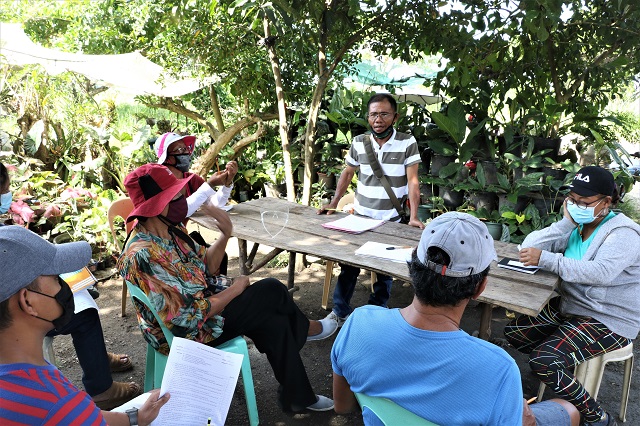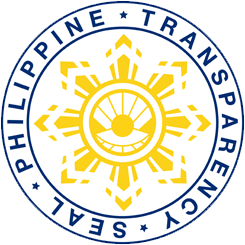
Most Filipino rice farmers are normally engaged in a single income source to support their family needs. Growing rice and selling it as fresh palay to traders is habitual for them in getting immediate cash returns. For Johnny C. Escote, 54, from Central Glad, Midsayap, North Cotabato, it’s not yet too late to try rice business, in fact, it’s the best time to initiate one knowing that buying price of palay is unstable.
His kababayan Manolito Cacanindin, 51, from San Pedro thinks the same. He adds that rice business should be fueled with more participative and adaptive group members. Just one year after his training under the Rice Business Innovations System (RiceBIS) Community Program, Johnny and Manolito’s lane shifts from small-time farmer to a promising agriprenuer.
Business desire ignites
In his three-decade affair with rice farming, making rice as business has not crossed his mind. His appetite for business was whetted after his involvement in RiceBIS in 2016.
Aside from not having adequate knowledge, he admitted that he was not willing to take risks when it comes to farming. “We settled with what we only know and always have this hesitation to adopt changes in our farming practices,” he revealed.
Johnny and his co-members of the Libre Sigad Irrigators Association Inc. were introduced to inbred rice seed production as a source of income. The RiceBIS Midsayap team aimed to strengthen the group’s productivity, lower their production cost, and link them to market and business development service providers.
“The idea of making rice as a business was presented. Among all possible ventures, I opted to engage in seed production as I saw a wider and brimming market for this commodity especially in North Cotabato,” said Johnny. Now, he also sees the advantages of providing better-quality seeds to other farmers who often recycle seeds from their previous harvest.
Utilizing 1.5ha of his farm, Johnny now sells good seeds to co-farmers for P1,300 per 40-kg bag in Midsayap and neighboring Kabacan and Aleosan towns. He gets as many as 150 bags at 40kg each every cropping season. Johnny readies himself to become an accredited seed grower before 2021 ends so as his co-members.
It’s a different story for Manolito and his two clusters with 36 members. During their training in 2019, their group thought of ways on how to generate additional income from the rice they are producing to cushion the effect of low buying price of palay.
He mentioned that some members admitted that they have been joining training sessions but they normally didn’t apply what they learned. With RiceBIS business ideas and the guidance from Manolito, who serves as their leader, the members remained committed to pursue rice business.
Leveling up farm and group practices
Prior to joining RiceBIS, Johnny was harvesting 230 bags (60kg each) of NSIC Rc222 from his 2.75-ha land. After his technical training under the project, he scooped as high as 315 bags of the same variety. He chose this variety owing to its high resistance to diseases.
The use of certified seeds every cropping season and proper nutrition management resulted in extra sacks of rice for Johnny. “The additional 85 sacks compensate for the possible losses from low palay price at that time. If the price of fresh palay were the same two years ago, I could have earned more,” Johnny summed it up.
“I was inspired to attend the RiceBIS activities especially discussion and application of proper fertilizer management and 40-60kg seeding rate using the drum seeder, because I realized that many of my traditional ways of rice farming could be combined with modern management practices,” he confessed.
Through their organized meetings in RiceBIS, Johnny learned the value of getting together with fellow farmers and listening to strategies and business ideas from co-members. With the imparted conviction that rice business is profitable, their association leaders learn to negotiate or even peg the price for their harvest through farm produce consolidation.
According to Johnny, the program has improved their association’s protocols and efforts enforcing transparency of processes in their group. He shared that they now regularly conduct reporting and monitoring those who are observing proper protocols in their farm practice. Most of their members are beneficiaries of the RiceBIS program. With member-biased policies and a new set of board members, Johnny expresses that majority of their members trust the system and the upcoming business model that they plan to implement.
For the RiceBIS clusters where Manolito belongs, active engagement and strong commitment were instilled in the members. “While it is inevitable that there are some inactive members, we continue to encourage and motivate them to be more participative though house-to-house interaction”, he said.
As a cluster leader, and village councilor, Manolito is firm when it comes to setting and collecting the members’ commitment in the form of dried and cleaned palay for their shared capital.
Based on what they agreed, each member must remit not less than 50kg every cropping season plus 20-40kg of clean and dry palay depending on how many kilograms of certified seeds they received from government programs. He is proud that this scheme works for them and confident that this is a stepping stone for their planned rice business.
Supporting each other
With RiceBIS, farmers can start rice-related businesses together with co-farmers in the community. Johnny emphasized that farmers thinking and working with farmers like agriprenuers could unlock opportunities that could alleviate poverty in rice-farming communities. It is said that “bright minds think alike”.
For Johnny, the farmer’s mindset of selling fresh palay right after harvesting must be changed, and thus harvest and post-harvest facilities be made available and accessible especially during the peak harvest season.
“Small farm holders normally have no access to machines such as combine harvesters and mechanical dryers. It is best for them to formally organize themselves into cooperatives to emulate what we have achieved,” Johnny concluded.
Manolito, who now leads processing of the group’s registration as cooperative, excitingly shared that they will engage in rice milling business soon.
“Since we received the free high-quality rice seeds, we set our individual commitments to have resources for our shared capital. With expected good quality and productivity, we are ready to mill the consolidated palay from members,” he said. Manolito assured that expected income will be used to procure farm inputs for their members and will be sold at a lower price.
After seeing the strengths of these groups on leadership and quality production, PhilRice Midsayap is pushing to combine the groups of Johnny and Manolito to become the first RiceBIS model in Central Mindanao. [with reports from Sylvia Therese C. Quiring and Perry Irish H. Duran]




